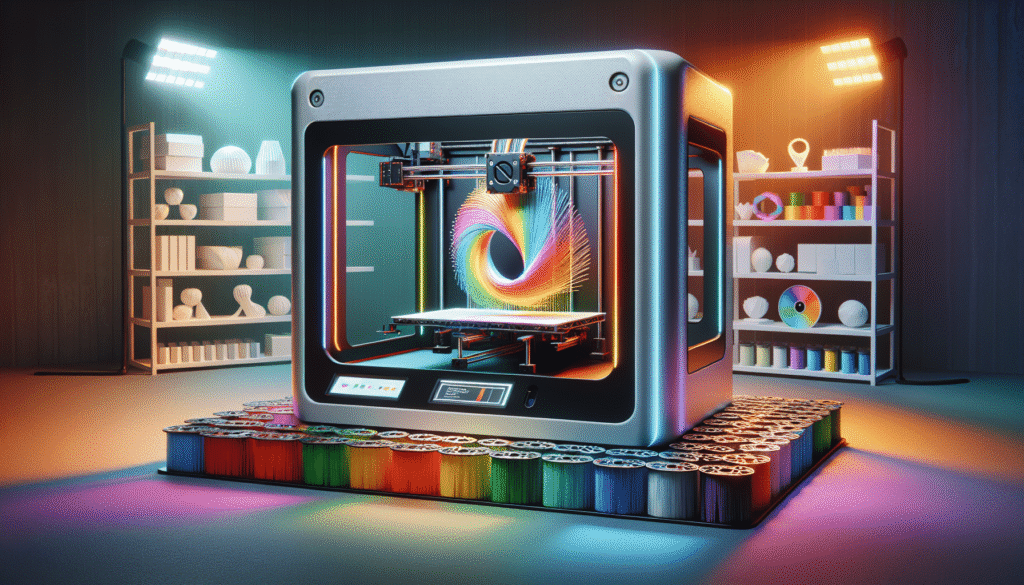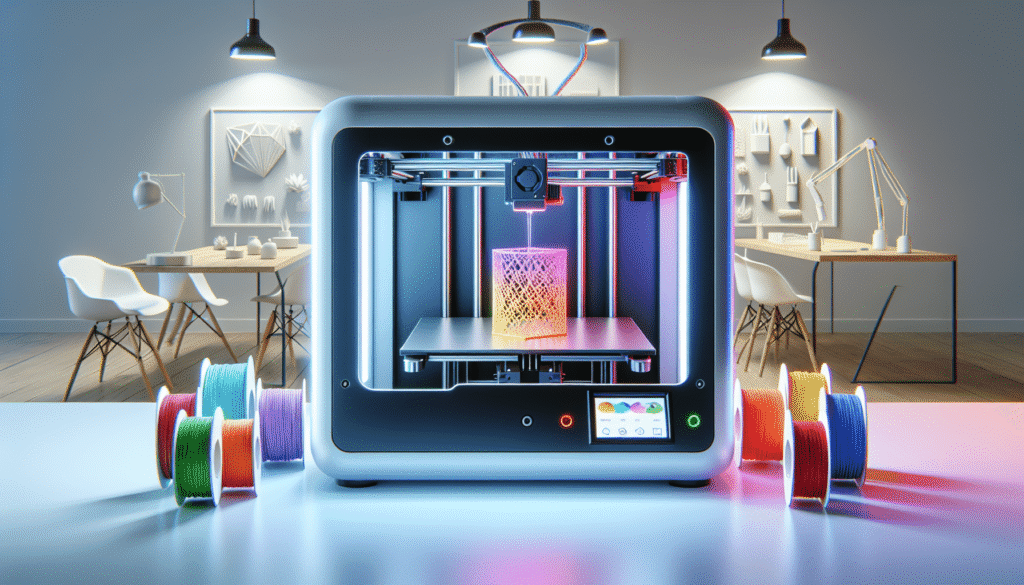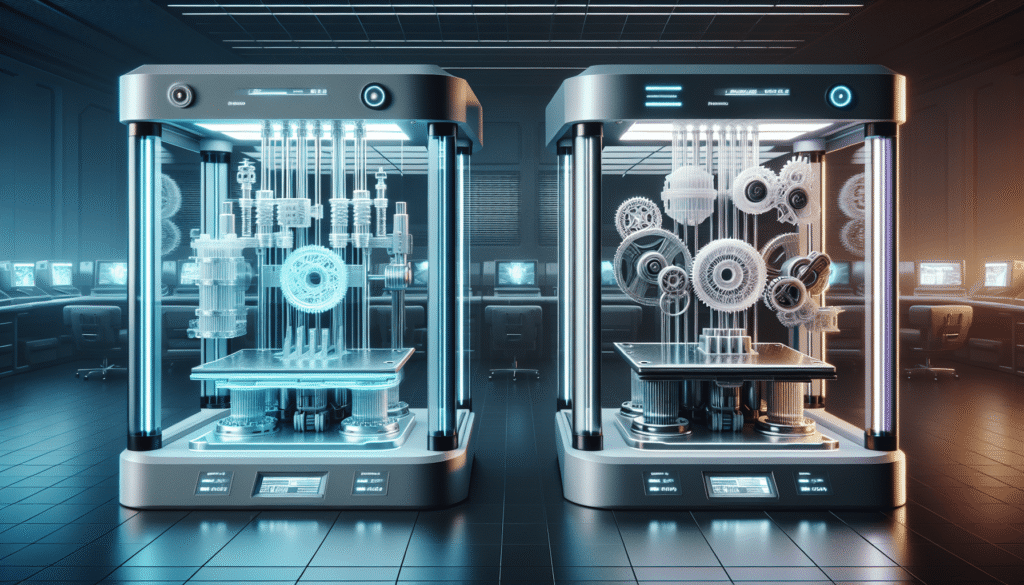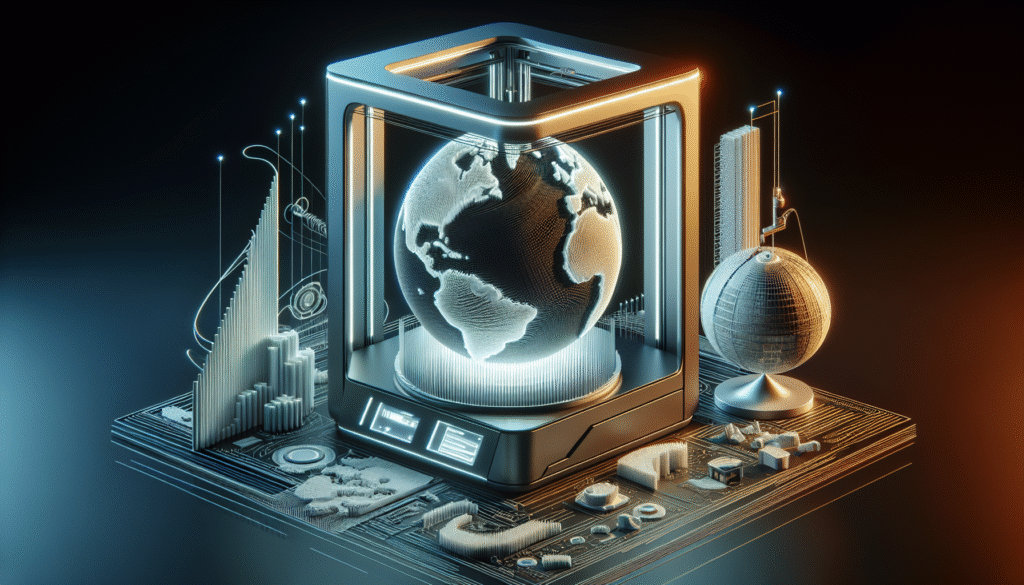Have you ever imagined the world of 3D printing in vivid, multi-color glory? It’s like the difference between watching black-and-white television and experiencing the full spectrum of a high-definition screen. This technology, which sounds like something straight out of a science fiction novel, is fast becoming a reality—thanks to recent breakthroughs making multi-color 3D printing more accessible to the general public. Let’s embark on this colorful journey together, shall we?

Understanding the Basics of 3D Printing
First, let’s paint a picture of what 3D printing entails. Imagine a device that translates digital designs into physical objects by laying down material layer by layer. It sounds a bit magical, doesn’t it? Essentially, a 3D printer is the synthesis of art and technology, capable of producing items ranging from simple toys to complex engineering parts. But what’s this talk of multi-color, you ask?
The Evolution of 3D Printing
The journey of 3D printing dates back to the early 1980s. Initially, it was primarily monochromatic and limited to a few types of materials like plastics. Fast forward to today, and the industry has drastically broadened both in palette and possibilities. This rapid evolution has been driven by technological advancements and a growing understanding of 3D printing’s potential in various sectors, including healthcare, manufacturing, and even culinary arts.
How 3D Printers Work
At its core, 3D printing is about constructing objects layer by layer based on a digital model. The intricate dance between hardware and software is a sight to behold. Picture a robotic maestro conducting an orchestra of motors and nozzles, crafting a three-dimensional masterpiece from seemingly nothing. The materials used vary from plastics and metals to even organic compounds. Each comes with its own set of possibilities and challenges.
Monochrome vs. Multi-Color Printing
Now, let’s add a splash of color to this canvas. While traditional 3D printing was limited to one-color outputs, multi-color printing allows for a riot of hues, bringing digital designs vividly to life. This capability transforms 3D printing from a purely functional process to a more artistic one, opening up new realms of innovation and creativity. Can you imagine the possibilities?
The Breakthrough in Multi-Color 3D Printing
Recently, there has been a significant breakthrough in the realm of multi-color 3D printing, making it not just a dream held by industrial giants but a tangible reality for various sectors. This shift is due to innovative technologies and a drive to make these tools more user-friendly and financially accessible.
Key Technological Innovations
The underlying technology responsible for this multi-color breakthrough is worth spotlighting. Innovations in material science, print heads capable of ejecting multiple filaments, and the development of new software algorithms are paving the way to technicolor realities. One might say it’s like giving Michelangelo a modern toolkit—a new capability to conjure even more impressive creations.
A Table of Color Printing Technologies
To make sense of this technological leap, let me introduce a handy table of some of the standout technologies that have redefined the field:
| Technology | Description | Applications |
|---|---|---|
| Full-Color Sandstone | Utilizes plaster-based powder and inkjet technology for vivid prints. | Prototyping, complex geometries |
| PolyJet Printing | Combines multiple materials in a single print, allowing for gradient color patterns. | Detailed models, realistic prototypes |
| Fused Depositing Modeling (FDM) with Multi-Material Filament | Allows the use of multiple filament colors; accessible and user-friendly. | Consumer products, hobbyist projects |
| MJM (MultiJet Modeling) | Uses multiple print heads to jet layers of build and removable support materials. | High-detail parts, intricate designs |
Software Enhancements
As impressive as the hardware innovations are, they’re nothing without the software to match. Emerging software ensures seamless transitions between colors, eliminates mixing errors, and optimizes the printing process. These tools provide a bridge between creative imagination and the physical world. Have you ever wanted a tool that could interpret the kaleidoscope in your mind? This might just be it.

Benefits of Multi-Color 3D Printing
Why all the fuss, you ask? The benefits of embracing multi-color 3D printing stretch beyond simply aesthetics. Imagine reduced costs, faster prototype development, and enhanced product personalization. Let’s unwrap these gifts together.
Cost-Efficiency
Initially, 3D printing wasn’t budget-friendly. High costs due to complex material and machine requirements often placed it out of reach for the average enthusiast. With the advent of multi-color printing, however, more cost-effective techniques are available, reducing the need for painting or additional post-production processes. It’s akin to coloring in the lines without spending a fortune on fancy crayons.
Accelerated Prototyping
In today’s world, speed is king. Multi-color 3D printing can significantly accelerate the prototyping phase. No longer do designers need to succumb to monotonous single-color prototypes. Now, they can produce fully realized, vibrant models that better envision the end product. This not only saves time but also streamlines the R&D process.
Personalization and Creativity
The personalization possibilities with multi-color 3D printing are downright dazzling. From custom toys to intricate architectural models, the scope of imagination is the only boundary. What’s your dream project? Multi-color 3D printing might just be the tool that allows you to bring it to life.
Challenges and Considerations
It’s not all rainbow-colored roses, though. Despite its promise, multi-color 3D printing presents its fair share of challenges. Understanding these hurdles helps align expectations and prepares us to face them head-on.
Material Limitations
Though the variety of available materials is expanding, multi-color printing is still somewhat restricted by what can be printed and how it behaves under heat and pressure. Some colors and material combinations may not yield as satisfactory results as others, necessitating a period of trial and error.
Calibration and Maintenance
Achieving perfect color consistency requires precise calibration of the printer. It’s a bit like tuning a piano—sometimes it takes patience and a keen ear. Regular maintenance is also crucial to ensure long-term reliability and performance. It often begs the question: Are you ready to become a maestro of machine maintenance?
Environmental Impact
Every innovation comes with its ecological footprint. The increased use of materials and energy for color printing raises questions about environmental sustainability. Companies and individuals alike must consider how to responsibly source and manage materials to mitigate any negative impacts on our planet.
Real-World Applications
Yet, even amid these challenges, multi-color 3D printing is making a tangible impact across various industries. From fashion to medicine, the real-world applications are as diverse as they are inspiring. Let’s peek into some of these vibrant sectors.
Healthcare and Medicine
In healthcare, personalized prosthetics and anatomical models are created in colors that reflect the reality of human anatomy. It’s as if medical professionals have gained an enhanced set of lenses through which they can better diagnose and understand patient-specific conditions.
Fashion and Textile Design
In the realm of fashion, designers are using multi-color 3D printing to introduce bespoke patterns and textures. Imagine garments that defy traditional constraints, offering unparalleled customization options to the wearer. It’s not just about fashion anymore—it’s a form of wearable art.
Art and Design
Artists, too, have embraced the potential of multi-color printing. Sculptures and exhibits once limited by monochrome palettes now burst with color, allowing for even more expansive expression. It’s as though the very nature of art is being redefined, one colorful layer at a time.
Automotive and Aerospace Industries
In automotive and aerospace sectors, color-coded parts streamline assembly and maintenance processes. These industries benefit because even the smallest optimization in design or functionality can lead to significant improvements when applied at scale. A proverbial small step for man, and a giant leap for machinery.
The Future of Multi-Color 3D Printing
The future is indeed a bright one for multi-color 3D printing. As the technology continues to evolve, it promises even greater accessibility, efficiency, and versatility. But where do we go from here?
Expanding Accessibility
Efforts are underway to bring multi-color 3D printing technology to both small businesses and hobbyists. Educational institutions are incorporating it into their curriculums, inspiring a new generation of inventors and innovators. What would you create if you had this technology at your fingertips?
Technological Convergence
Multi-color 3D printing is set to merge with other advancing technologies, like AI and virtual reality, creating a synergy that could revolutionize industries yet to be imagined. It’s a bit like the technological equivalent of a jam session, where different innovations come together to produce something harmonious and novel.
Sustainability Initiatives
In seeking to balance innovation with responsibility, future developments will likely emphasize eco-friendly materials and processes. As stewards of the planet, it’s up to us to ensure that this breakthrough doesn’t come at the Earth’s expense.
Conclusion
As we stand at the colorful precipice of multi-color 3D printing, the potential seems as boundless as a painter’s palette. It’s a world where creativity is fully unleashed, and visions are brought to life with just the touch of a button. Whether you’re a professional seeking new tools or someone with a dream waiting in the wings, multi-color 3D printing offers a canvas ready for your masterpiece. Who wouldn’t want to grab this opportunity with both (possibly robotic) hands? The future is not only bright; it’s vibrantly hued, waiting to be shaped layer by colorful layer.


